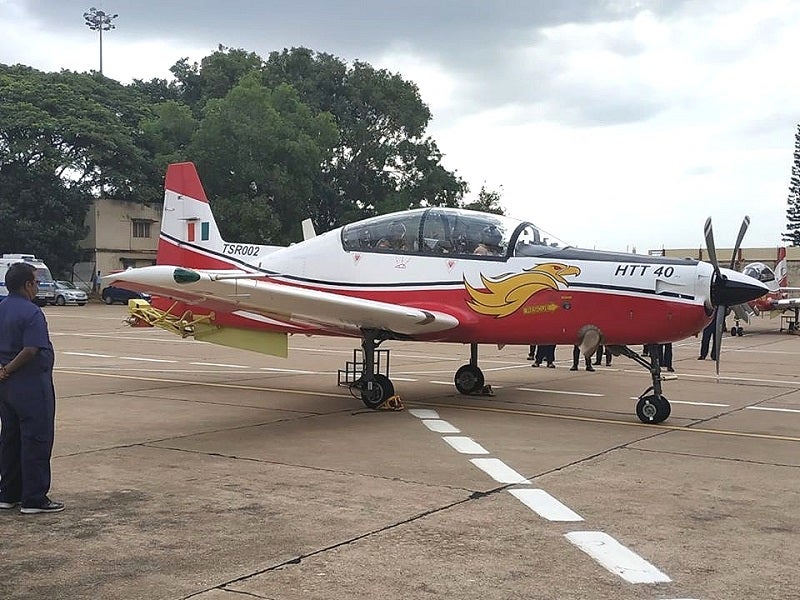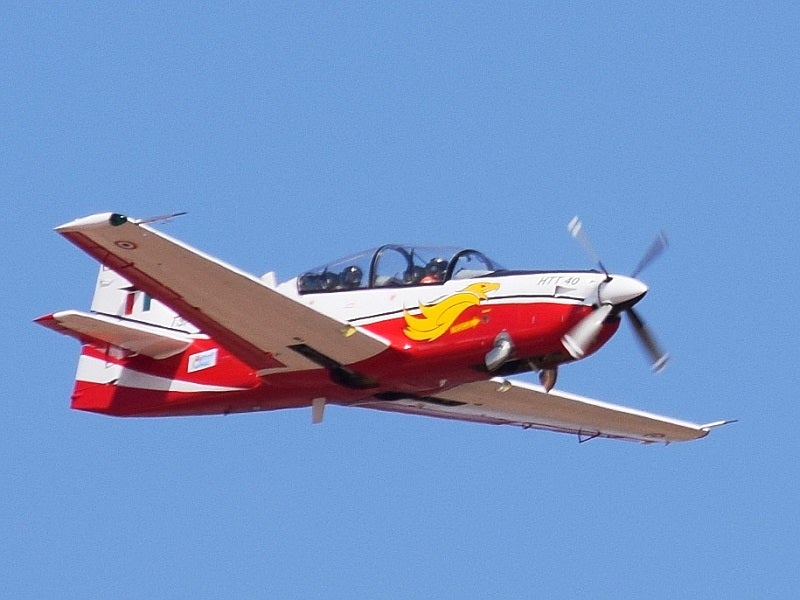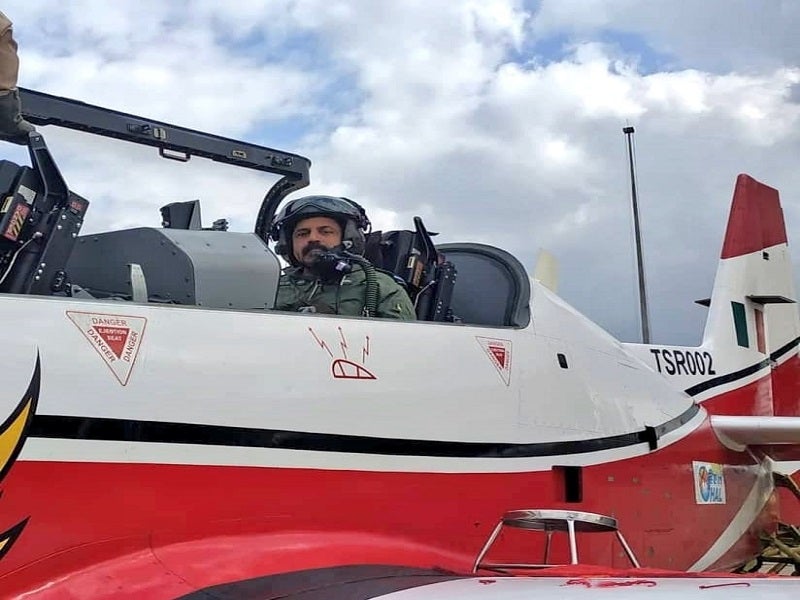HTT-40 (Hindustan Turbo Trainer-40) is a new basic training aircraft developed by Hindustan Aeronautics Limited (HAL) for the Indian Air Force (IAF). The new aircraft will replace the ageing fleet of HAL HPT-32 Deepak trainers that are in service with the IAF.
The tandem seat, fully aerobatic turbo trainer aircraft will be primarily used for basic flight training, aerobatics, instrument flying and close-formation flights, whereas its secondary roles will include navigation and night-flying.
The first prototype of HTT-40 Trainer was rolled out from the Aircraft Research and Design Centre (ARDC) hangar, in February 2016. The indigenously built HTT-40 trainer made its first flight in May 2016.
HTT-40 development
The HTT-40 project was conceptualised by HAL to fulfil the IAF’s requirement of 181 trainer aircraft. Due to the HTT-40’s development delays, the air force placed an order in May 2012 for 75 Pilatus PC-7 Mk II turboprop trainers to meet its urgent operational requirements.
The Indian Ministry of Defence (MoD) chose to procure 38 Pilatus trainers to replace its old trainer aircraft fleet in February 2015, while the remaining 68 aircraft was planned be sourced from HAL.
HAL completed works on ground test air-frame and also produced several air-frame structures for the first aircraft by mid-2015. The plan to purchase 38 Pilatus trainers was cancelled in 2019 following a probe by India’s Central Bureau of Investigation into the alleged irregularities in the 2012 procurement order for the Pilatus trainers.
The MoD approved the acquisition for 106 HTT-40 basic trainer aircraft from HAL for the IAF in August 2020.
HAL received a request for proposal (RFP) from the IAF for the HTT-40 trainer at the Aero India 2021 aerospace and defence exhibition in Bengaluru, Karnataka, in February 2021. The production will start at HAL’s facility in Bengaluru, before the project will transition to serial production at Nashik. The HTT-40 successfully completed its spin flight certification test in August 2021 and is ready for operational clearance.
Design and features of HTT-40 indigenous trainer
The HTT-40 is a fixed-wing aircraft incorporating an all-metal airframe design. It features a bubble canopy, T-tail configuration and a retractable tricycle landing gear system with a steerable nose wheel.
The aircraft is designed to meet the training requirements of the IAF. HAL is planning to develop a weaponised version in the future to support counter-insurgency and limited strike operations.
Cockpit of the trainer aircraft
The air-conditioned, glass cockpit accommodates two crew, including an instructor and trainee in tandem seating configuration with zero-zero ejection seats. It integrates multi-function displays, and modern navigation and communication systems.
Engine
In June 2015, Honeywell was selected by HAL to supply the TPE331-12B turboprop engines for the high-performance HTT-40 military trainer aircraft. The TPE331-12B turboprop engine, equipped with full-authority digital engine control (FADEC) system, develops a maximum power output of 950 shaft horsepower (shp).
It is one of the most widely-employed turboprop power-plants in operation. It enables the HTT-40 to offer users quick acceleration, low-fuel consumption, high-reliability and the flexibility to conduct a range of training missions. The reliable turboprop engine also allows HAL to develop a range of variants that will deliver increased levels of performance.
Honeywell delivered more than 13,000 TPE331 engines to both military and civil operators worldwide. The fleet of TPE331 engines accumulated more than 122 million flight hours to date. The engines power a range of aircraft, including light aircraft and advanced unmanned aerial vehicles (UAVs).
HTT-40 trainer performance
The HTT-40 trainer offers the best-in-class fuel economy and power rating. It takes-off from a short distance and has a high rate of climb. It has a maximum speed of 450km/h and can reach a maximum distance of 1,000km. The stall speed with flaps down is 135km/h.
The certified operational ceiling of the trainer is 6,000m, the ‘G’ limits are +6/-3 and airborne endurance is three hours.






